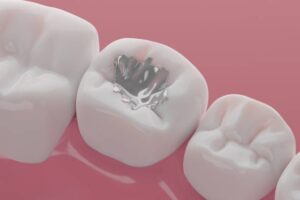Dental Fillings Adelaide: What Types of Dental Fillings Are Available?
There are many different types of dental fillings Adelaide available. The type that your dentist recommends depends on several factors, such as the location and extent of the decay, cost and your insurance coverage.
A tooth-coloured composite resin is bonded (glued) to the affected tooth. It can be matched to your tooth colour and resists staining.
Amalgam
 Amalgam fillings combine silver, tin, copper, zinc, and mercury, which a dentist puts into a hole in the tooth to seal it from bacteria and food particles. They are the most common and affordable choice for dental fillings.
Amalgam fillings combine silver, tin, copper, zinc, and mercury, which a dentist puts into a hole in the tooth to seal it from bacteria and food particles. They are the most common and affordable choice for dental fillings.
They are durable and resistant to chewing forces, making them a good choice for back teeth like the molars. They also last, on average, for eight to ten years. Amalgam fillings have been around since the turn of the 20th century and are easy for dentists to work with.
Composite Resin
Composite fillings are created by mixing quartz or glass with a plastic resin. The dentist can match the colour of your tooth, and this filling looks very natural. This is a more recent advancement in filling materials; most insurance companies now cover the cost of this material.
They are used for small to medium restorations and withstand moderate chewing pressure. They can also be used to fix chips and to correct cosmetic issues with a tooth.
The process for a composite is a bit more time-consuming than an amalgam filling, and the dentist must be precise when placing it to achieve a proper appearance. It can also be more prone to future damage since it doesn’t hold up as well against chewing or moisture exposure.
Ceramic is a more durable material but tends to cost more than other dental fillings Adelaide. It is used for inlays, onlays, crowns and veneers and resists abrasion, corrosion and discolouration.
Ceramic
Ceramic fillings are made of porcelain and are a very aesthetically pleasing option that also resists staining. The material is bonded chemically to the tooth, producing a strong overall result. This filling may require more than one visit to the dentist at the outset and is, therefore, more expensive than composite resin.
The main advantage of this type of filling is its durability. If properly cared for, they can last significantly longer than plastic or composite fillings and even silver amalgam fillings. Furthermore, they are very tolerable and do not cause any allergic reactions.
Ceramic fillings are usually only used on back teeth but can also be fitted to front teeth if needed. The procedure requires using a special digital device to make a model of your tooth and produce the required inlay on-site at the dental practice. This technique (CADCAM) reduces the time it takes to fit and insert these inlays into just one visit.
Glass Ionomer
These fillings are made from a mix of acrylic and glass material and are most commonly used for fillings in the chewing surfaces of back teeth and for baby teeth. These fillings release fluoride into the tooth and can help prevent future decay. They last about five years and are comparable in price to composite resin.
Ceramic dental fillings Adelaide are similar to composites in terms of look and durability but more resistant to staining. Like composites, ceramic fillings are applied in layers and hardened with a special curing light. This multilayering process makes the restoration more durable, but it can also increase the amount of chair time required for the treatment and may require more than one office visit.
Gold
Gold is durable and can resist corrosion, making it an excellent choice for molars and premolars that endure significant biting forces. Gold can also be fabricated to fit the precise contours of a tooth, which minimizes the risk of future decay and allows for a more aesthetically pleasing restoration.
The downside of gold is that it can be costly and requires a skilled dental technician to manufacture the filling. It is also more abrasive to opposing teeth than other filling types and may cause tooth wear over time.
